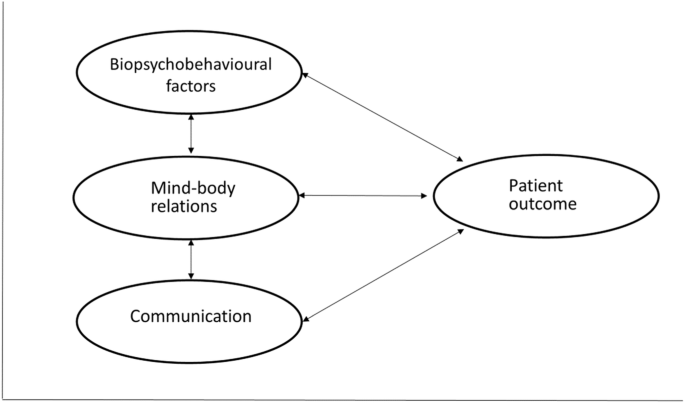What You Need to Know About 3 Rare Infectious Eye Diseases

Infection Control Today and ContagionLive collaborate on rare infectious diseases during Rare Disease Awareness Month.

For the month of February 2024, Infection Control Today® and Contagion®Live are collaborating on rare infectious diseases for Rare Disease Awareness Month, examining both old and new infectious diseases that health care workers need to know.
While virtually any eye disease, such as conjunctivitis, is unpleasant, other, more unusual conditions can result in serious health deficits, such as scarring and permanent loss of vision. Eric D. Donnenfeld, MD, Ophthalmic Consultants of Long Island, New York, recently spoke with Infection Control Today® about 3 rare eye conditions that can also be highly infectious.
“Infections to the eye vary significantly based on their location,” says Donnenfeld. “On the surface of the eye or the cornea, the infections that are rare and highly infectious are mostly viral. One of these, and the most infectious form of pink eye, is called epidemic keratoconjunctivitis (EKC).”
This highly contagious infection, caused by an adenovirus pathogen, is found on the front surfaces of the eye and, because it is viral, offers no specific treatment. Symptoms can resolve in about 2 weeks, but hygienic practices are key to stopping the infection from spreading to other people. “This infection spreads very quickly, and patients who, for example, touch their eye, then a doorknob, can transmit it to the next person who touches that doorknob and then rubs their eye,” Donnefeld says. Symptoms include eyes turning beet red (it usually infects both eyes), with membranes on the conjunctiva that can then cause scarring.
According to Donnenfeld, “The cornea can have subepithelial infiltrates that can cause a permanent loss of vision: this tends to happen in highly epidemic clusters that occur from time to time around a particular geographic area.”
Seven years ago, an outbreak of EKC was discovered in an eyecare clinic in Los Angeles, California. At the time, the CDC reported, “On June 22, 2017, the Los Angeles County Department of Public Health (LAC DPH) was notified of seven patients who were seen at an eye care clinic on June 8, 2017, and later developed symptoms of epidemic keratoconjunctivitis (EKC). EKC is a contagious, severe form of viral conjunctivitis that can cause pain and blurred vision for up to 4 weeks.”1
Patients with EKC are generally treated with topical corticosteroids to control the inflammation and reduce the scarring, notes Donnenfeld, and while the disease can resolve itself in 1 to 2 weeks, proper hygiene is essential to prevent the spread. “Patients need to avoid contact with other individuals, wash their hands frequently, and, of course, follow up with an eye doctor for potential anti-inflammatory therapy.”
Another unusual eye disease of note is herpes simplex keratitis. While herpes simplex virus (HSV) is, of course, a well-known condition that can affect the mouth and genital areas, “ocular herpes is much more rare, occurring usually in one eye. It usually presents with classic dendritic lesions with terminal bulbs,” Donnenfeld says. Recurrent activations within the sensory ganglion can result in corneal scarring, necrosis, and decreased corneal sensation, all of which can result in vision loss.
“Although not terribly contagious, once a patient has contracted HSV, it can reoccur in that same patient,” says Donnenfeld. It can also be transmitted through someone with the infection, so avoidance of direct contact with lesions and secretions of a patient with active HSV is key. Treatment is usually topical and/or oral antiviral therapy, such as valacyclovir and ganciclovir.
For patients with recurrent ocular HSV, long-term oral antiviral therapies of valacyclovir are recommended. “If untreated, herpes of the eye can cause permanent scarring, with loss of vision: these patients need to be monitored very carefully,” warns Donnenfeld.
According to the American Academy of Ophthalmology, risk factors for the development of this disease include direct contact with infected secretions or lesions. In contrast, reactivation of the disease includes triggers such as fever, sunlight, trauma, heat, stress, COVID-19 infection, and COVID-19 vaccination.2
While generally also rare, other eye infections can occur after surgery. “These, thankfully, are very uncommon but worth discussing. The most common surgeries performed in ophthalmology are cataract and Lasik surgeries,” says Donnenfeld. In Lasik surgery, a flap is made in the cornea, and it has been shown that, despite the use of prophylactic antibiotics, patients may develop infections in the cornea, which, if left untreated, go on to significant scarring and loss of vision that can even require a corneal transplant.”
These infections are most commonly due to gram-positive organisms such as methicillin-resistant staphylococcus aureus or atypical mycobacterium (late onset). The immediate treatment is to lift the flap and irrigate, culture, and then initiate broad-spectrum antibiotics, sometimes with possible flap amputation for recalcitrant cases. Treatment includes a topical fluoroquinolone monotherapy or a combination therapy of fortified antibiotics, such as cefazolin and tobramycin or gentamicin. The frequency of these drops depends on the severity of the case, and “when treated effectively, these patients usually do very well,” says Donnenfeld.
Endophthalmitis is a rare but serious postoperative condition of cataract surgery, which can result in loss of all light perception in a patient. It is usually contracted from bacteria from the patient’s ocular surface. Preoperative risk factors included conjunctivitis, contact lens wear, and recent immunosuppressive treatment. Proper hand washing and proper use of sterile gloves, face masks, and gowns during surgery can significantly reduce the chance of infection as well. Intracameral injection of the antibiotic cefuroxime after cataract surgery has been noted to cause a reduction in endophthalmitis.3
Finally, another form of rare eye disease is related to contact lens use, which has a higher risk for keratitis (the infection of the cornea, also called corneal ulcers). Viruses, bacteria, fungi, or parasites are more likely to invade the eyes when contact lenses are worn for too long or there has been poor adherence to wearing of the lenses, and most likely from gram-positive organisms.
When these ulcers occur in the visual axis, they can cause permanent loss of vision and possibly the need for corneal transplantation. The most common risk factors for these ulcers are poor hygiene and overnight wear,” says Donnenfeld. Here, common sense prevails; contact lens wearers should wash their hands thoroughly when removing their contact lenses; they should be removed at the end of the day, or however, a health care practitioner has recommended.
“Daily wear of contact lenses with good hygiene reduces the risk of these infections. These infections should be cultured and treated with broad-spectrum antibiotic therapy,” says Donnenfeld.
References
1. OYong K, Killerby M, Pan CY, Huynh T, Green ND, Wadford DA, Terashita D. Outbreak of epidemic keratoconjunctivitis caused by human adenovirus type D53 in an eye care clinic—Los Angeles County, 2017. MMWR; 67(48)1347-1349. doi:10.15585/mmwr.mm6748a4
2. Nijm LM. Herpes simplex epithelial keratitis. American Academy of Ophthalmology. March 6, 2023. Accessed February 18, 2024. https://eyewiki.aao.org/Herpes_Simplex_Epithelial_Keratitis
3. Niyadurupola N, Astbury N. endophthalmitis; controlling infection before and after cataract surgery. Community Eye Health. 2008;21(65):9-10.
link



![[2025 Physical Health Awareness Survey] Physical Health Self-Assessment and Health Management Efforts [2025 Physical Health Awareness Survey] Physical Health Self-Assessment and Health Management Efforts](https://i0.wp.com/hrcopinion.co.kr/wp-content/uploads/2025/08/iStock-1186136736.jpg?fit=680%2C453&ssl=1)


